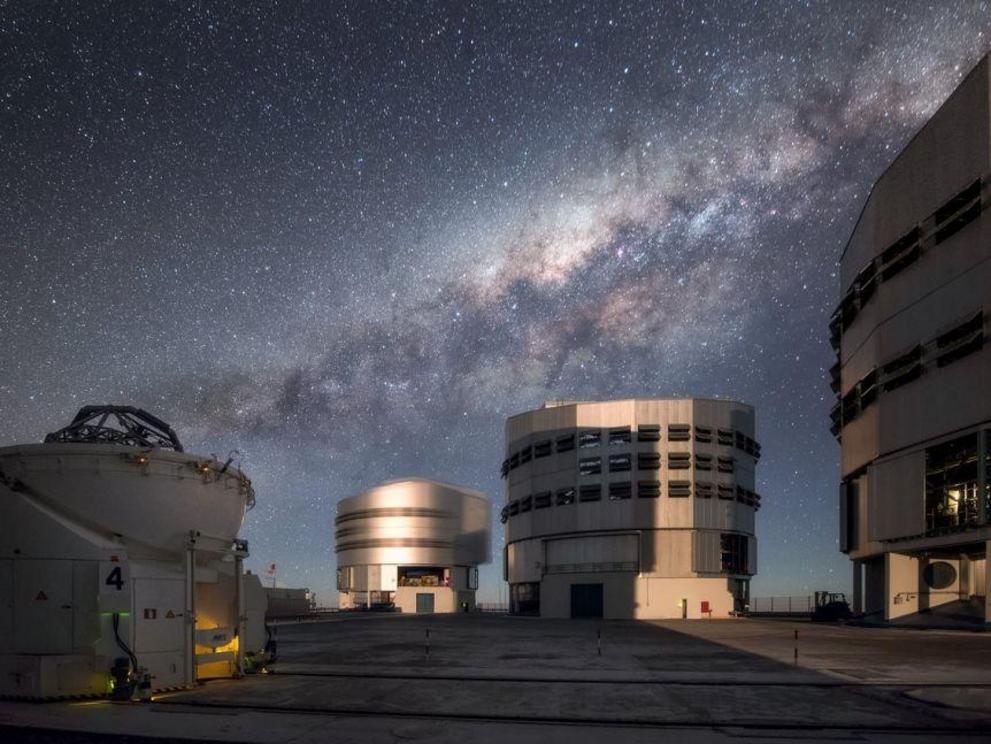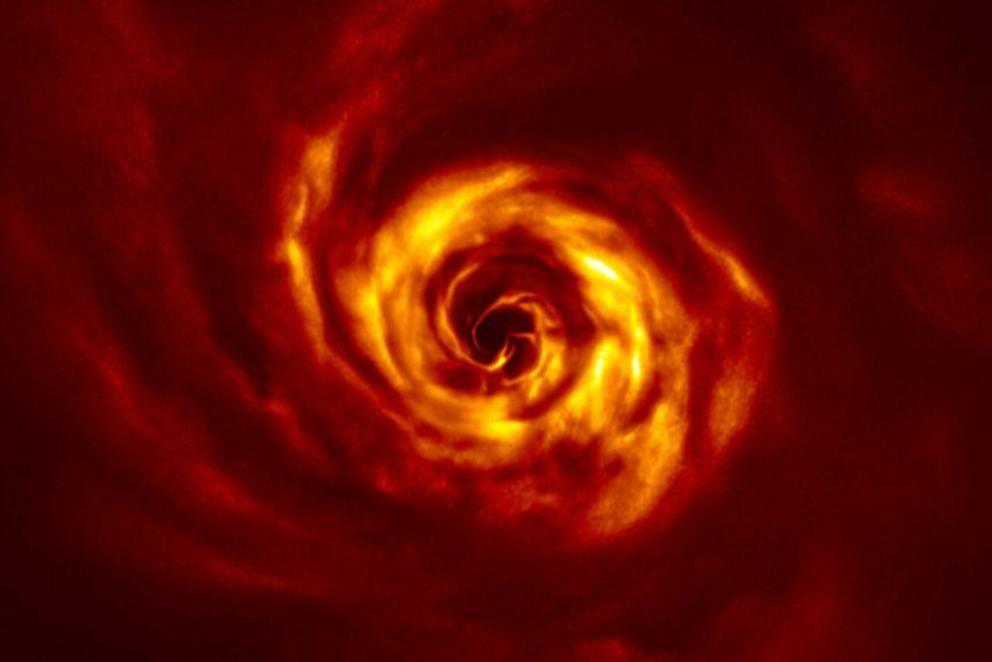Scientists using very large telescope for the first time observe a new planet being formed
The disc around the young star AB Aurigae, where European Southern Observatory's Very Large Telescope has spotted signs of planet birth.
Astronomers have gazed into what appears to be a planetary maternity ward — within a huge disk of dense gas and dust surrounding a newly formed star — a planet in the process of being born.
Key points:
- Scientists spotted a 'twist' pattern which they believe indicates the planet forming around the young star AB Aurigae
- AB Aurigae is located about 520 light-years from Earth
- They used the Very Large Telescope which is located in Chile's Atacama desert
The large young planet is believed to be forming around a star called AB Aurigae, which is about 2.4 times the mass of the sun and located in our Milky Way galaxy, 520 light-years from Earth.
Scientists used the European Southern Observatory's (ESO) Very Large Telescope in Chile to observe the spiral structure within the swirling disk around AB Aurigae.
They detected a "twist" pattern of gas and dust in the spiral structure marking where the planet was coalescing, said Observatoire de Paris astronomer Anthony Boccaletti, who led the research published in the journal Astronomy & Astrophysics.
"It takes several million years for a planet to be in its final stage, so birth is not well defined in time," said Dr Boccaletti.
"However, we can say that we were likely able to catch a planet in the process of formation."
 The new planet being formed was spotted using ESO's Very Large Telescope in Chile.
The new planet being formed was spotted using ESO's Very Large Telescope in Chile.
More than 4,000 planets have been discovered orbiting stars beyond our solar system and scientists are eager to learn more about how they are born, as cold gas and dust consolidate in these disks surrounding new stars.
"Thousands of exoplanets have been identified so far, but little is known about how they form," said Dr Boccaletti.
"We need to observe very young systems to really capture the moment when planets form."
Technology allowing better baby planet photos
Until recently, astronomers had been unable to take sufficiently sharp and deep images of these young discs to find the "twist" that marks the spot where a baby planet may be coming to existence.
Dr Boccaletti said the planet was located about 30 times further from its star than Earth's distance from the sun — about the distance of the planet Neptune in our solar system.
He said it appeared to be a large gas planet, not a rocky planet like Earth or Mars, and could be more massive than our solar system's largest planet Jupiter.
The ESO is now constructing the 39-metre Extremely Large Telescope, to study extrasolar worlds.
Dr Boccaletti said this powerful telescope would allow astronomers to get even more detailed views of planets in the making.
"We should be able to see directly and more precisely how the dynamics of the gas contributes to the formation of planets," he said.
ABC/Reuters

